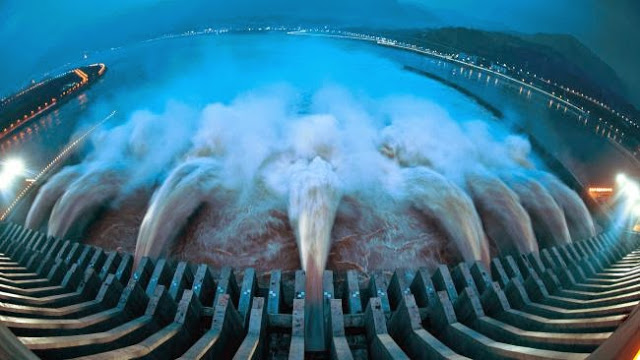“Powerful”
does not actually do this astonishing (and VERY controversial) structure
justice. Since the $30 billion project was announced, Chinese officials have
faced heavy inquiry from both researchers and environmental activists like.
Many believe
that the dam will eventually result in disaster. Some worries include the dam
trapping pollution, generating earthquakes and landslides, uprooting citizens
(more than 1.3 million people have by now been forced to relocate), and
abolishing historical locations - along with the habitats of endangered
animals. (The government lastly conceded that the project was ill conceived -
after years of naming the dam one of the most remarkable pieces of engineering
in Chinese history - but the damage is already done.)
The last 32
generators (each proficient of producing 50 MW of power) went into action at
the end of July last year. The gushing water produced by the dam has sufficient
power to produce about 22.5 million kilowatts (22,500 megawatts) of energy (the
estimates vary), which is equal to about FIFTEEN nuclear reactors and, of
course, it does not cause worries about radioactive materials being released
(which is a very good thing, specifically after events like the Chernobyl and
Fukushima nuclear disasters) - so the disastrous effects can be annulled by
most, mainly due to the fact that it’s a clean, effective way of rendering
energy for a booming population.
Wondering
how this could possibly have an influence on the Earth’s rotation? Here’s a
wonderful source that breaks it down further:
“Three
Gorges Dam crosses the Yangtze River in Hubei province, China. It is the
world’s biggest hydroelectric power station by total capacity, which will be
22,500 MW when finished. When the water level is at maximum….it will flood a
total area of 632 km2 of land. The reservoir will have about 39.3 cubic km
(9.43 cubic miles) of water. That water will weigh more than 39 trillion
kilograms (42 billion tons).
A shift in a
mass of that size will influence the rotation of the Earth due to a phenomena
known as “the moment of inertia”, which is the inertia of a rigid rotating body
with respect to its rotation. The moment of inertia of an object about a given
axis defines how hard it is to change its angular motion about that axis. The longer
the distance of a mass to its axis of rotation, the slower it will spin. You
may not know it, but you see examples of this in everyday life. For example, a
figure skater trying to spin faster will draw her arms tight to her body, and
thereby decrease her moment of inertia. Likewise, a diver trying to somersault
faster will bring his body into a tucked position.
Raising 39
trillion kilograms of water 175 meters above sea level will rise the Earth’s
moment of inertia, and thus slow its rotation. Though, the impact will be
exceptionally small. NASA researchers calculated the shift of such a mass will
increase the length of day by only 0.06 microseconds, and make the Earth only
very faintly more round in the middle and more flat on the top. It will also shift
the pole position by about two centimeters (0.8 inch). Note that a shift in any
object’s mass on the Earth relative to its axis of rotation will change its
moment of inertia, although most shifts are too small to be measured (but they
can be calculated).”
Not to
worry, however. Earth’s rotation changes normally, with many different
variables added into the equation. First, we have the moon slowly receding from
the Earth changing Earth’s rotation ever-so-slightly. Earthquakes (like the mega quake in Japan
back in 2011) also help along the process (the same quake changed Earth’s
rotation by 2.68 microseconds). Additionally, every 5 years (or so), the length
of the day increases and decreases by about a millisecond, or about 550 times
bigger than the change caused by the Japanese earthquake.
Still, this
knowledge begs many interesting questions. Namely, how far is too far?
Individually, these things don’t make much of a difference one-way-or-another,
but together, who knows.
what are
your thoughts?

Comments
Post a Comment